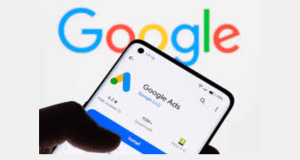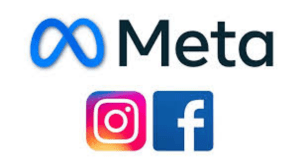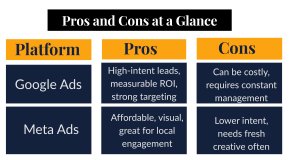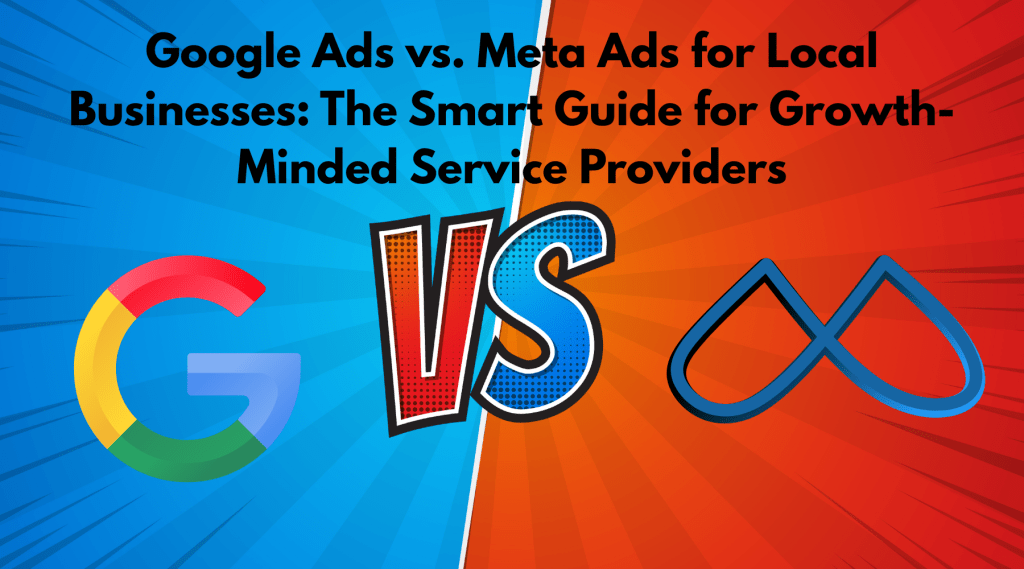Introduction
Are you a growth-minded local business owner, like Rachel Greene, who runs a busy wellness studio, and wondering whether Google Ads or Meta Ads will help you attract more clients, increase sign-ups, and grow your community?
You’re not alone. Many service-based entrepreneurs face the same decision. When time is tight and budgets matter, making the right marketing move feels critical.
Imagine consistently seeing new faces walk through your doors, more people engaging online, and your brand becoming a local favorite, without breaking the bank or losing your personal touch.
This guide will help you understand how Google Ads and Meta Ads can work for your local business. We’ll break down the differences, show you what works best for your goals, and share practical, budget-friendly strategies to grow your reach and revenue.
TL;DR:
This guide compares Google Ads and Meta Ads (Facebook & Instagram) for local service businesses. You’ll get real-world tips, smart budget strategies, and a bonus resource to help you attract more of the right clients.
Why Digital Ads Matter for Local Businesses
Whether you run a yoga studio, med spa, fitness center, or boutique, your ideal clients are already searching for you or scrolling right past you. Digital ads help you get seen at the right time, by the right people.
It’s not about being everywhere. It’s about showing up where it counts with a message that feels personal and authentic.
Google Ads vs. Meta Ads: What’s the Difference?

Google Ads: Show Up When People Are Searching
Google Ads connects you with high-intent customers who are actively looking for your services (like “best pilates class near me”).
Ad Types: Text ads, call-only, display ads, local service ads
Where They Appear: Google Search, Maps, YouTube, partner sites
Best For: Getting found when people are ready to take action

Meta Ads: Connect While People Scroll
Meta Ads (on Facebook and Instagram) are visual and storytelling-focused. They’re great for building relationships, showcasing your brand personality, and staying top-of-mind.
Ad Types: Image, video, carousel, testimonials, events
Where They Appear: Feeds, Stories, Reels, Messenger
Best For: Building brand awareness, trust, and local community engagement
Reaching Your Ideal Clients: Intent vs. Connection
Google Ads = Intent
When someone types “yoga classes in [your city]” on a Monday morning, that’s intent. Google Ads gets your business in front of them when they’re ready to book.
Meta Ads = Connection
Your Instagram reel of a sunrise class or client success story sparks emotion. Someone saves it, follows your page, and signs up for your next event. Meta builds loyalty before they even search.
Budgeting & Costs: What to Expect
Google Ads
Model: Pay-per-click (PPC)
Budget: Set daily or monthly caps
ROI: Strong for direct leads and quick bookings
Meta Ads
Model: Cost-per-click (CPC) or cost-per-impression (CPM)
Budget: Flexible, ideal for small starts
ROI: Best for long-term engagement and retargeting
Pro Tip: Start small on both platforms—$5–$10/day. Test different messages and use insights to guide your spend.
Best Practices for Ad Creatives
Google Ads
Use clear, keyword-rich headlines like:
“Top-Rated Yoga Classes in [City] – Book Now”Include strong calls-to-action (CTAs)
Take advantage of Call-Only Ads and Local Service Ads to reach people with urgent intent
Meta Ads
Feature real people and real moments (think: behind-the-scenes, client transformations)
Promote events, open houses, and specials using Stories or Reels
Use testimonials, video snippets, and community involvement
Pro Tip: People connect with people—use local faces, real stories, and community-focused visuals.

When to Use Each Platform
Use Google Ads if:
You want immediate bookings
You offer services that people actively search for
You need fast, trackable results
Use Meta Ads if:
You’re building brand awareness or community
You promote events, classes, or testimonials
You want to grow a loyal local following
Want the Best of Both Worlds? Use Both!
Smart local businesses combine both for a full-funnel strategy:
Google Ads: Capture ready-to-book clients
Meta Ads: Retarget visitors, build community, promote events
Example:
Run Google Ads to drive traffic to your website → then use Meta Ads to retarget those visitors with a special offer or client testimonial.
Easy, Budget-Friendly Strategies That Work
Use Local Testimonials
Add client reviews to your ads and landing pages. Ask happy clients to tag your business on social media.Run Geo-Targeted Meta Ads
Promote events, free classes, or open houses within your local radius.Optimize Your Google Ads
Focus on keywords like “[your service] near me.” Test multiple CTAs and headlines.Adjust Weekly
Use Google Analytics and Meta Insights to track what’s working. Shift your budget to the top performers.Leverage Seasonal Trends
Run timely campaigns (New Year’s, summer glow-up, holiday wellness) that speak to what your audience needs right now.
Quick Tips for Busy Local Business Owners
✅ Start with just $5–$10/day per platform
✅ Use tools like Google Ads Editor and Meta Ads Manager
✅ Keep it real use your own photos and stories
✅ Respond to comments and DMs to boost trust
✅ Experiment, track results, and keep refining
Final Thoughts: Grow Your Community & Fill Your Calendar
You don’t have to choose just one platform. The real win comes from knowing your goals and aligning your ads accordingly.
Use Google Ads to capture demand.
Use Meta Ads to build desire and loyalty.
Together, they help you attract more of the right people—faster.
🎁 Free Resource:
Download our guide, “How to Laser Target New Customers Who Need Your Help, RIGHT NOW,” and get proven strategies to attract your ideal local clients with confidence.

